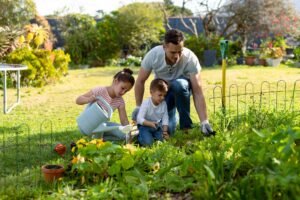Tree Pruning and Removal: Essential Practices for Healthy Landscapes
Maintaining a healthy landscape is critical for both aesthetic and ecological reasons, and tree pruning and removal are essential practices in this regard. Pruning involves various techniques aimed at enhancing tree health, allowing for improved air circulation, light penetration, and overall tree vigor. Key pruning methods include thinning, crown reduction, and deadwooding. Thinning entails selectively removing branches to decrease density without altering the tree’s natural shape, which allows more sunlight to reach lower branches. Crown reduction reduces the height or spread of the tree, which can help manage its size in relation to surrounding structures. Deadwooding, the removal of dead or diseased branches, is paramount in preventing the spread of disease and ensuring safety for people and structures below.
While pruning plays a crucial role in tree care, there are instances when tree removal is deemed necessary. Trees may require removal due to safety concerns, particularly if they pose a risk of falling due to structural damage or disease. Over time, trees that become diseased can compromise the overall health of the landscape, making removal crucial to protect other plants and maintain environmental health. Determining when to remove a tree involves assessing factors such as proximity to buildings, the degree of disease, and the tree’s overall stability.
When considering tree removal, it is vital to follow best practices to ensure both safety and efficiency. Engaging a professional tree service that is certified and insured can provide the expertise needed for proper assessment and execution of removal. Ensuring that the service provider follows industry standards and utilizes appropriate equipment can minimize risks associated with tree felling. Engaging professionals not only facilitates a safe removal process but also alleviates the stress associated with handling large, potentially hazardous trees on your property.
Grading, Brush Removal, and Landscape Installations: Transforming Your Outdoor Space
Effective landscape management begins with a thorough understanding of grading, brush removal, and landscape installations. Grading is an essential process that involves leveling and shaping the land to prepare it for planting or construction. This step is crucial for ensuring proper drainage, which helps prevent water accumulation and erosion. By optimally grading the soil, landscape professionals can create a more functional outdoor area that supports the growth of vegetation and prevents potential structural issues.
Another pivotal aspect of maintaining an appealing outdoor space is brush removal. Overgrown brush not only detracts from the aesthetics of a landscape but can also harbor pests, create safety hazards, and compete with desired plants for nutrients and sunlight. Regular brush clearing promotes a healthier ecosystem by reducing the likelihood of infestations and providing ample space for desirable flora to thrive. Furthermore, by managing the amount of underbrush and weeds, homeowners can cultivate more organized and visually satisfying gardens.
When it comes to landscape installations, several techniques can transform an outdoor area into a vibrant, functional space. The selection of appropriate plants is a fundamental consideration, as it ensures that the landscape aligns with local climate conditions and soil types. In conjunction with plant choices, implementing hardscaping elements such as patios, pathways, and retaining walls can provide structure and enhance a property’s functionality. A well-designed landscape incorporates various design principles, including symmetry, balance, and contrast, to create a cohesive and inviting environment. These elements work harmoniously, offering not only aesthetic pleasure but also practical benefits such as improved property value and functionality.















